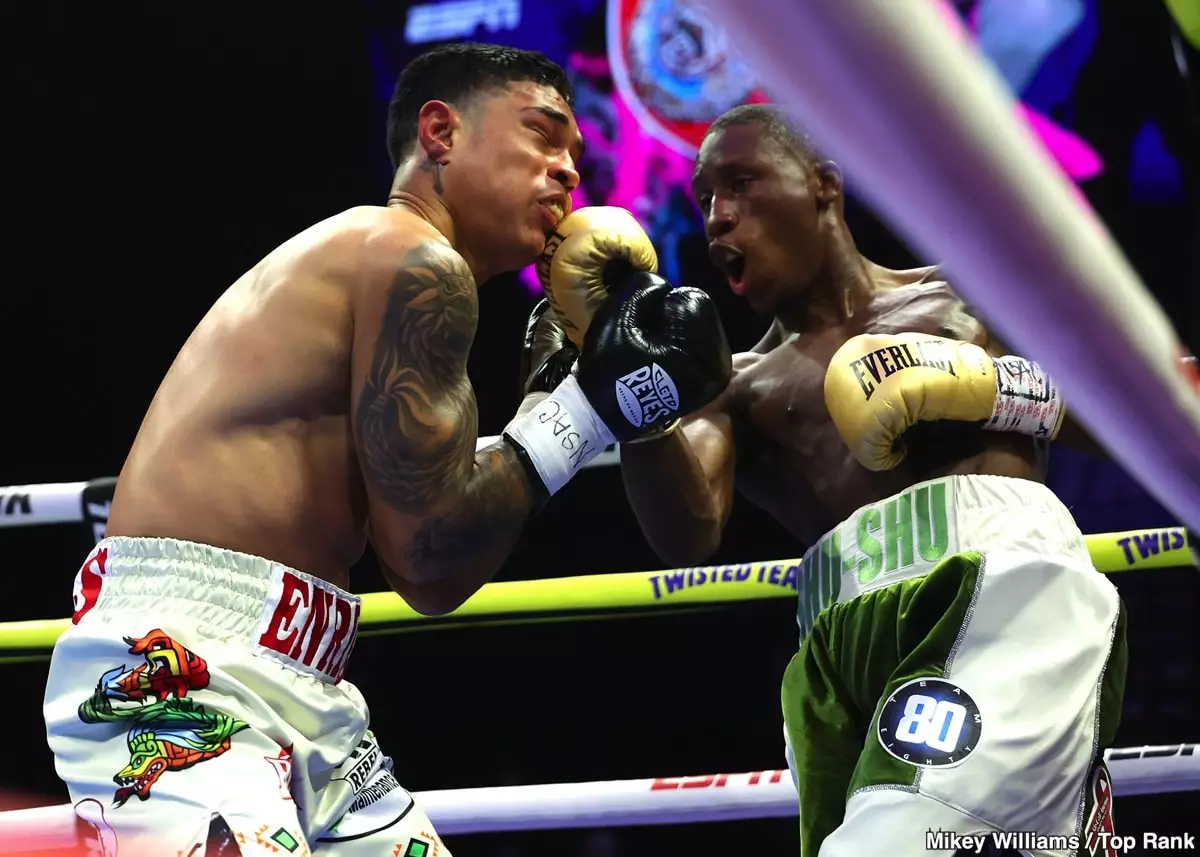In the world of boxing, particularly within the featherweight division, anticipation and tension often rise as emerging talents vie for supremacy and recognition. Stephen Fulton, the reigning WBC featherweight champion, embodies resilience and skill, holding his title against a backdrop of challengers eager to unseat him. Most notably, 15-0 Bruce Carrington recently ignited the conversation surrounding championship aspirations post his knockout victory over Enrique Vivas. However, Fulton’s dismissive response to Carrington’s callout shines a light on the intricacies of the boxing hierarchy and the sometimes murky art of skill recognition.
Carrington’s achievement, albeit commendable, brings forth important questions about the qualifications necessary to challenge a champion. While Carrington may boast an undefeated record with nine knockouts, the perceived weaknesses in his opponents raise eyebrows. This reality leads to the broader question of whether sheer numbers can justify a championship challenge without a substantive test against more seasoned fighters.
Assessing Carrington’s Resume
The critique surrounding Carrington’s opponents highlights the contentious nature of modern boxing promotions. Unlike previous eras where champions often battled the top contenders without hesitation, today’s promotional strategies can create an illusion of readiness that might not correlate with genuine capability. Carrington’s pattern of selective matchmaking invites skepticism about his intentions; is he genuinely seeking glory, or is he merely angling for a lucrative payday against established names like Fulton or Nick Ball?
Fulton’s criticism of Carrington’s callout underscores the champion’s perspective as someone who had to earn his stripes against formidable opponents. By pointing out that Carrington hasn’t faced anyone of significance, Fulton positions himself not merely as a champion but as a gatekeeper of credibility within the division. This gatekeeping role is crucial in ensuring that championship fights remain meaningful, presenting a clash of deserving contenders and preserving the integrity of the sport.
Analyzing Carrington’s Statement
In the immediate aftermath of his victory, Carrington asserted his belief in his superiority within the featherweight ranks, boasting that he “made a big statement” by stopping a tough opponent. Yet, statements of dominance tend to fall flat without evidence. His claims of being “on a different level” demand substantiation through action, particularly against more recognized fighters such as Rafael Espinoza. By avoiding such matchups, Carrington risks fostering a reputation solely built on hype, rather than proven skill.
The struggle Carrington faces—balancing the pursuit of high-profile bouts with his promoter’s caution—reflects a common dilemma faced by fighters climbing the ranks. The fear of taking on a well-qualified opponent before securing a windfall can encourage a focus on lucrative matchups rather than essential growth. This anxiety may motivate Carrington’s resistance to fight Espinoza, a contestant many consider a formidable adversary.
Implications for the Featherweight Landscape
Even though Carrington aims to assert his dominance and climb the ranks through strategic callouts, the mixed reception he faces raises critical implications for the future of featherweight boxing. Fans and critics alike desire to witness fighters step into the ring against credible opponents, feeding a need for validation in an era where reaching the pinnacle often seems reliant on connections rather than skill.
Fulton’s identification of Carrington’s otherwise untested record likely resonates with boxing purists who yearn for integrity and rigour in the sport. It challenges the notion that fighters can sidestep hard fights while expecting recognition and admiration. There is merit in acknowledging the need for fighters to position themselves strategically; however, the absence of high-stakes clashes dilutes the excitement that comes with the pursuit of championship titles.
The Road Ahead
As the boxing world continues to evolve, the discourse between champions and challengers will play a pivotal role in illustrating the contours of competition in the ring. The friction between Stephen Fulton and Bruce Carrington not only highlights their personal aspirations but reflects broader tensions within the sport. If Carrington desires a title fight, he must confront the most formidable challenges head-on, transcending the confines of promotional strategy. The future of featherweight boxing hinges not simply on who shouts the loudest or accumulates the most victories, but on who dares to face adversity and validate their claims through action.

